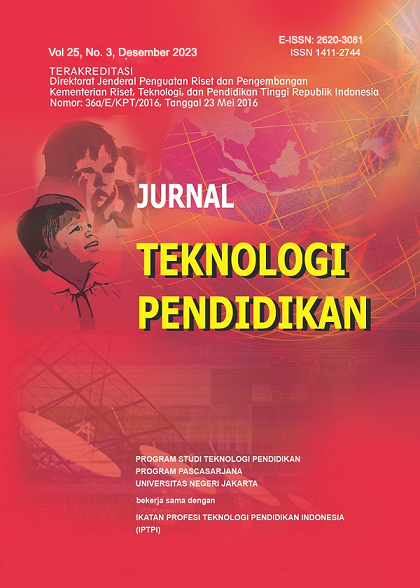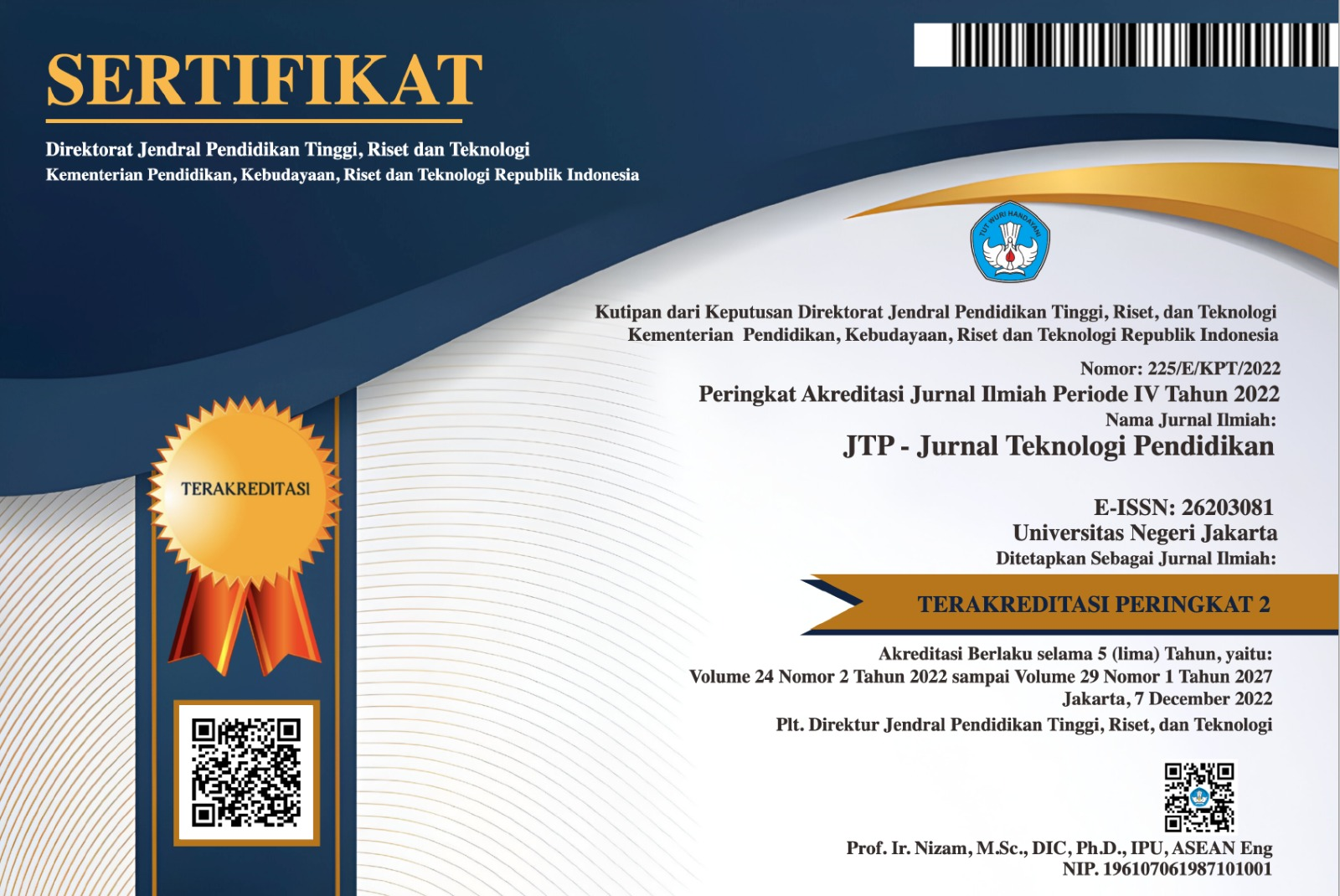History Learning Innovation with Steam Approach
DOI:
https://doi.org/10.21009/jtp.v25i3.37059Keywords:
history education, project based learning, STEAMAbstract
So far, history lessons are only textual in nature. For this reason, teachers must start preparing students to face the rapidly changing technological developments. Meanwhile, the need for human resources in the future is to be able to think analytically, collaboratively, and interdisciplinary. For this reason, this research will raise the application of STEAM through Project Based Learning as an innovation in learning history. Researchers use qualitative methods. First, reflection aims to bring students into the context of the problem and provide inspiration to students. At the research stage, more learning processes occur. In this stage, the teacher also guides the discussion more and determines whether students have developed conceptual and relevant understanding. The discovery stage connects research and information known in project preparation. Students begin to study independently and determine what is still unknown. At this stage, the students collaborate to find solutions. At the application stage, students test products made from previously determined conditions. The results obtained are used to improve the previous step. The final step is communication. The communication process is carried out to convey ideas. At this stage, the teacher and colleagues conduct a final assessment. In addition, teachers are also expected to be able to provide appreciation and constructive feedback. The results showed that STEAM in Project Based Learning for history learning proved to be effective in encouraging students' creativity, collaboration, and communication skills. However, this method requires careful planning. Some students are also not familiar with project learning.
References
Imamah, Z., & Muqowim, M. (2020). Pengembangan kreativitas dan berpikir kritis pada anak usia dini melalui metode pembelajaran berbasis STEAM and loose part. Yinyang: Jurnal Studi Islam Gender Dan Anak.
Kuntowijoyo. (1997). Pengantar Ilmu Sejarah. Jakarta: Gramedia.
Lestari, S. (2021). Pengembangan orientasi keterampilan abad 21 pada pembelajaran fisika melalui pembelajaran PjBL-STEAM berbantuan Spectra-Plus. Ideguru: Jurnal Karya Ilmiah Guru, 6(3), 272-279.
Lune, H., & Berg, B. (2017). Qualitative Research Method for The Social Sciences 9th Edition. Malaysia: Pearson Education.
Malhotra, N., Nuna, D., & Birks, D. (2017). Marketing Research: An Applied Approach 5h Edition. New York: Pearson Education.
Mulyani, T. (2020). Pendekatan pembelajaran STEM untuk revolusi industry 4.0. Seminar Nasional Pascasarjana Unnes .
Nuragnia, B., & Usman, H. (2021). Pembelajaran STEAM di sekolah dasar: Implementasi dan tantangan. Jurnal Pendidikan dan Kebudayaan.
Nurhikmayati, I. (2019). Implementasi STEAM dalam pembelajaran matematika. Jurnal Didactical Mathematics.
Prodjo, W. A. (2020, January 16). STEAM, Metode pengajaran untuk menghadapi revolusi industry 4.0. From Kompas.com: https://nasional.kompas.com/read/2020/01/16/15231941/steam-metode-pengajaran-untuk-menghadapi-revolusi-industri-40
Pujiati, A. (2020). Penerapan pendekatan STEAM pada materi struktur atom terhadap pemahaman konsep kimia. Sinasis (Seminar Nasional Sains).
Rowse, A. (2014). Apa Guna Sejarah. Depok: Komunitas Bambu.
Sinha, D. (2020). Certified Human Resource Management Professional . From http://www.chrmp.com/addie-model-guide
Trianto, i. B.-T. (2017). Mendesain Model pembelajaran Inovatif, Progresif dan Kontekstual : Konsep, landasan, dan implementasinya pada kurikulum 2013 (Kurikulum Tematik, Integratif). Jakarta: Kencana.
Widiadi, A., Sheehan, M., & Shep , S. (2022). The Potential of Web-Based Historical Sources as Learning Resources to Foster Students Historical Thinking Skills. Paramita: Historical Studies Journal, 138-148.
Zuryanty, Hamimah, Kenedi, A. K., & Helsa, Y. (2021). Pembelajaran STEAM di sekolah dasar. Yogyakarta: Deepublish.
Downloads
Published
How to Cite
Issue
Section
License
Jurnal Teknologi Pendidikan is an Open Access Journal. The authors who publish the manuscript in Jurnal Teknologi Pendidikan agree to the following terms.
Attribution-ShareAlike 4.0 International (CC BY-SA 4.0)
-
Attribution — You must give appropriate credit, provide a link to the license, and indicate if changes were made. You may do so in any reasonable manner, but not in any way that suggests the licensor endorses you or your use.
-
ShareAlike — If you remix, transform, or build upon the material, you must distribute your contributions under the same license as the original.
- No additional restrictions — You may not apply legal terms or technological measures that legally restrict others from doing anything the license permits.
Notices:
- You do not have to comply with the license for elements of the material in the public domain or where your use is permitted by an applicable exception or limitation.
- No warranties are given. The license may not give you all of the permissions necessary for your intended use. For example, other rights such as publicity, privacy, or moral rights may limit how you use the material.








